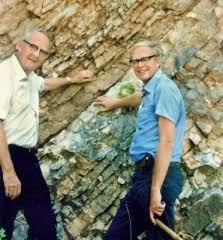Not "Eureka!" but "That's Funny. . ."
"The most exciting phrase to hear in science, the one that heralds new discoveries, is not 'Eureka!' (I found it!) but "That's funny. . ."
Isaac Asimov's words resonate for me partly because of the humor but also because of the ellipsis at the end of his quote. It is in that space of wondering, of trailing off, of inviting discourse that is so appealing. Growing up I learned to search for the "Aha!" moment. . . when, really, leaving the space to find new discoveries in the . . . is more inviting and collaborative.
Asimov also wrote that: "It pays to be obvious, especially if you have a reputation for subtlety." I took those words to heart in making this segue to Clarke Knight, Smith College Class of 2014 and newest Rhodes Scholar:
Ms. Knight (Clarke Knight of the Soul :-) ), a chemistry major, crew member, and book author is pictured above in the infamous Lyman Conservatory of banana plant glass pushing fame. Ms. Knight is from Henderson, Nevada, south of the Golden E Triangle of Ely-Elko-Eureka(!), Nevada:
It is an area of the Basin and Range where I did follow-up field-checking after photogeologic-geomorphic mapping and space imagery analysis. Tromping around in the horsts and grabens of the extensional (or pull-apart) geologic features of central and northern Nevada was a true treat. Amazing fossils and fascinating geology surrounded us. Clarence Dutton wrote of the Great Basin in 1886:
Whoever has examined, even cursorily, the map of Western America must have noticed the following arrangement of the mountain masses: The great belt of cordilleras coming up through Mexico and crossing into United States territory is depicted as being composed of many short, abrupt ranges or ridges, looking upon the map like an army of caterpillars crawling northward.
Another Asimov quote: "I write for the same reason I breathe--because if I didn't, I would die." I am not sure of Ms. Knight's thoughts on writing but I share Dr. Asimov's thoughts. His personal papers take up 464 boxes or 71 meters of shelf space. He wrote over 500 books and over 90,000 letters and postcards. His books are in 9/10 of the categories of the Dewey Decimal System (just call Isaac Iceberg Writer. . . )
Dr. Asimov's first quote above has made me quite conscious of using the exclamation point versus the ellipsis. . .I welcome your comments from New Jersey to California and Germany to Yemen (Partial Ellipsis of the Sun Blog Reader Data: That's Funny. . .")
Gratefully,
Word Woman (Scientific Steph)
















